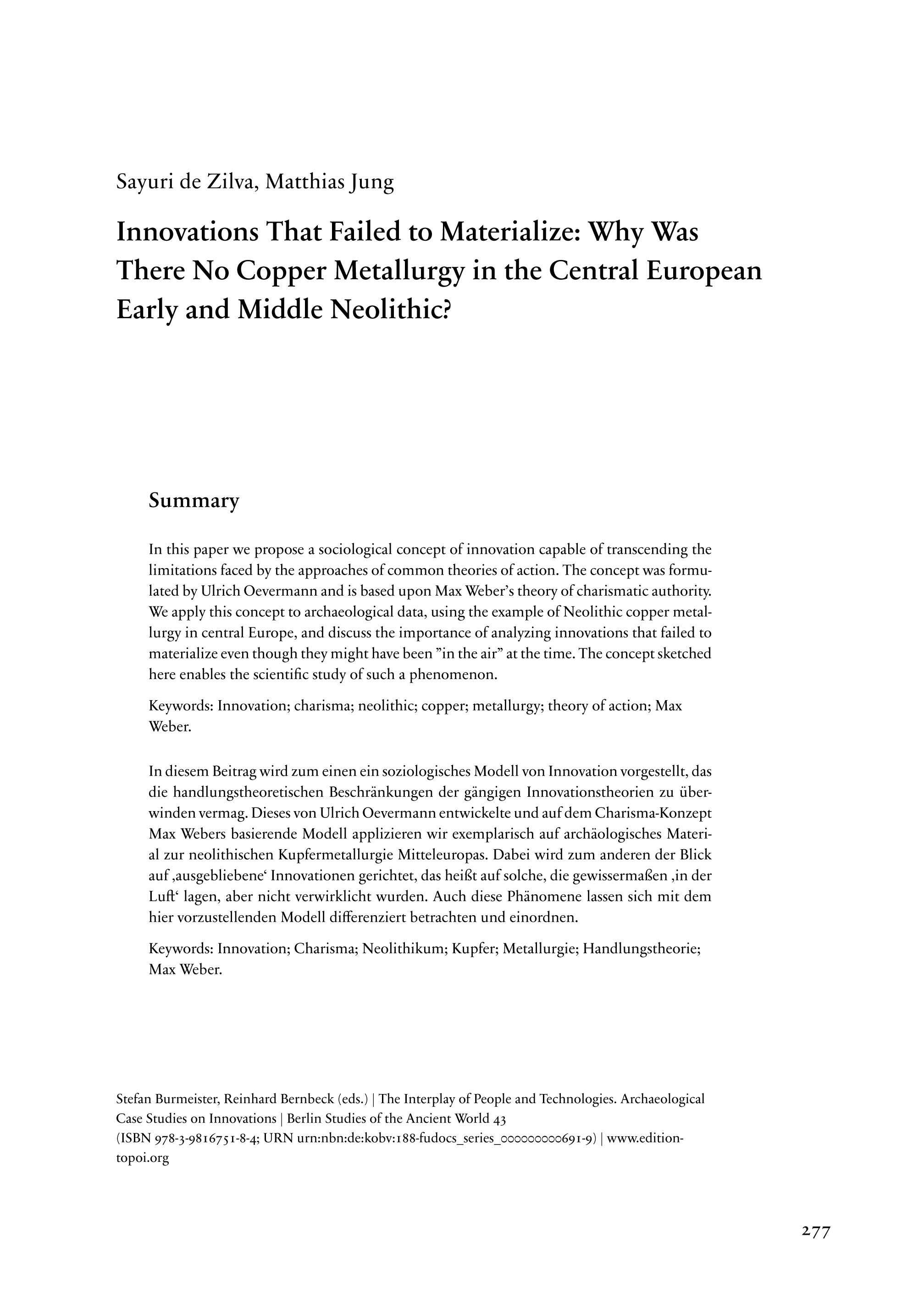Innovations That Failed to Materialize: Why Was There No Copper Metallurgy in the Central European Early and Middle Neolithic?
In this paper we propose a sociological concept of innovation capable of transcending the limitations faced by the approaches of common theories of action. The concept was formulated by Ulrich Oevermann and is based upon Max Weber’s theory of charismatic authority. We apply this concept to archaeological data, using the example of Neolithic copper metallurgy in central Europe, and discuss the importance of analyzing innovations that failed to materialize even though they might have been “in the air” at the time. The concept sketched here enables the scientific study of such a phenomenon.
In diesem Beitrag wird zum einen ein soziologisches Modell von Innovation vorgestellt, das die handlungstheoretischen Beschränkungen der gängigen Innovationstheorien zu überwinden vermag. Dieses von Ulrich Oevermann entwickelte und auf dem Charisma-Konzept Max Webers basierende Modell applizieren wir exemplarisch auf archäologisches Material zur neolithischen Kupfermetallurgie Mitteleuropas. Dabei wird zum anderen der Blick auf ‘ausgebliebene’ Innovationen gerichtet, das heißt auf solche, die gewissermaßen ‘in der Luft’ lagen, aber nicht verwirklicht wurden. Auch diese Phänomene lassen sich mit dem hier vorzustellenden Modell differenziert betrachten und einordnen.

